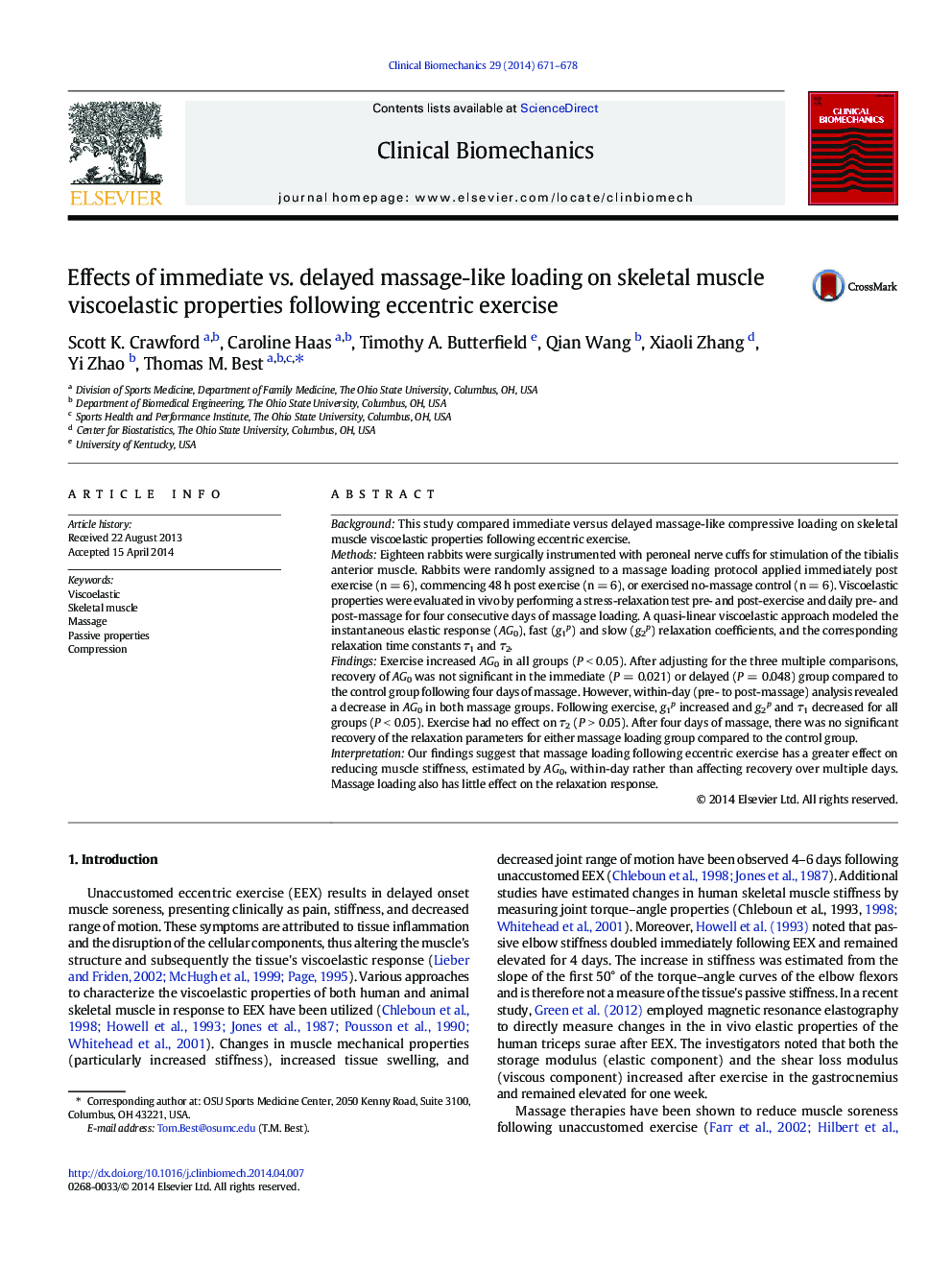| Article ID | Journal | Published Year | Pages | File Type |
|---|---|---|---|---|
| 4050437 | Clinical Biomechanics | 2014 | 8 Pages |
BackgroundThis study compared immediate versus delayed massage-like compressive loading on skeletal muscle viscoelastic properties following eccentric exercise.MethodsEighteen rabbits were surgically instrumented with peroneal nerve cuffs for stimulation of the tibialis anterior muscle. Rabbits were randomly assigned to a massage loading protocol applied immediately post exercise (n = 6), commencing 48 h post exercise (n = 6), or exercised no-massage control (n = 6). Viscoelastic properties were evaluated in vivo by performing a stress-relaxation test pre- and post-exercise and daily pre- and post-massage for four consecutive days of massage loading. A quasi-linear viscoelastic approach modeled the instantaneous elastic response (AG0), fast (g1p) and slow (g2p) relaxation coefficients, and the corresponding relaxation time constants τ1 and τ2.FindingsExercise increased AG0 in all groups (P < 0.05). After adjusting for the three multiple comparisons, recovery of AG0 was not significant in the immediate (P = 0.021) or delayed (P = 0.048) group compared to the control group following four days of massage. However, within-day (pre- to post-massage) analysis revealed a decrease in AG0 in both massage groups. Following exercise, g1p increased and g2p and τ1 decreased for all groups (P < 0.05). Exercise had no effect on τ2 (P > 0.05). After four days of massage, there was no significant recovery of the relaxation parameters for either massage loading group compared to the control group.InterpretationOur findings suggest that massage loading following eccentric exercise has a greater effect on reducing muscle stiffness, estimated by AG0, within-day rather than affecting recovery over multiple days. Massage loading also has little effect on the relaxation response.
